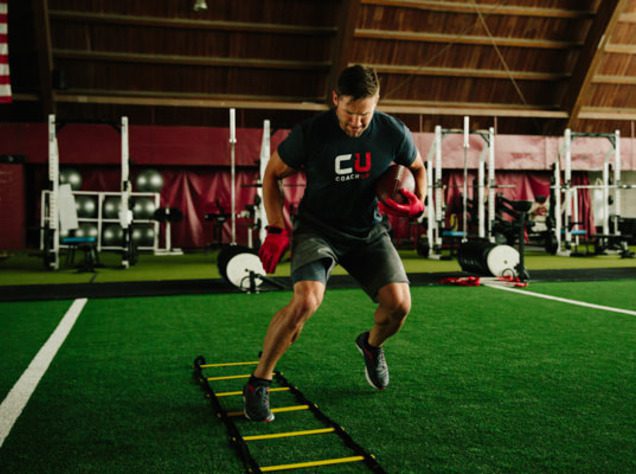Fast + Slow Twitch Muscles
Training, nutrition, mental preparation, and rest are heavy factors in determining one’s success athletically. Uncoincidentally, those are all things that somebody can always get better at. However, did you know that there are fibers in your body that help determine which types of sports you’ll be best at? These muscles dictate how an athlete will respond to various fitness exercises and demands on the body.
In broad strokes, these muscles fibers are classified as either Type I or Type II, or as slow or fast twitch. On average, the common human is about is 50/50 in terms of Type I or II, but most people’s bodies can favor one or the other. At the highest level, sprinters usually have more Type II fibers, while marathon runners tend to have more of the Type I. Unfortunately, it’s commonly accepted that people are born with a certain ratio and cannot change it with their fitness routine very easily. In any case, it’s helpful to know what type of fibers your body has and what sports they are best for.

I’ll Take One Marathon, Please
Type I fibers tend to be more efficient in their oxygen usage, meaning they can use it as fuel for a long, continuous time period. Typically, these fibers will be beneficial for fitness exercises like long distance running, biking, swimming, and rowing. It’s no coincidence that these sports demand brilliance over long periods of time. From long races, rides, or rows, Type 1 athletes are the people that could outpace the Energizer Bunny.
Then, you’ve got those with more Type II fibers. These particular fibers boast an incredible anaerobic metabolism, which means they can fire force stronger and quicker. Type II athletes are more successful over periodic instances of speed and strength, like a quick sprint or a breakaway opportunity. However, because they use so much force, the fibers tend to tire out quickly. So, you’re bound to see plenty of Type II athletes playing football, hockey, and basketball, where they can go full speed for two minutes and then get a break to recover.
(Related: Read about some bodyweight exercises you should take advantage of here.)
Huddle Up
At the end of the day, the difference between fast and slow twitch muscles aren’t the end-all-be-all in the conversation about sports. For example, you might not have the same type fibers as many marathon runners, but it could be your Type II muscles that spark a runner to a late accelerating sprint at the end of a long race. Or, you might not be able to lead a fast break like Russell Westbrook, but, instead, you can outpace him over the forty-eight minutes and be fresher for the last-second buzzer beater thanks to your Type I fibers!
It’s all subjective and there are most certainly work-arounds for either scenario, so don’t be discouraged by this one way or another. Simply knowing your potential advantages could be a huge leg up over your opposition. Again, just because you think you might be heavily made up of Type I muscles shouldn’t mean you have to give up on your love for basketball! Just because you’re built with Type II fibers doesn’t mean you can’t be successful over long distances on the track!
In fact, having either of them is no guarantee you’ll be good at anything! Only hard work, effort, and determination will decide who the best athletes are, so don’t let these muscles slow you down. If you’re curious about what you might have, consider booking one of CoachUp’s private trainers to start carving out your place on the field, track, or water! What are you waiting for?
How useful was this post?
Click on a star to rate it!
Average rating 1.5 / 5. Vote count: 2
No votes so far! Be the first to rate this post.



